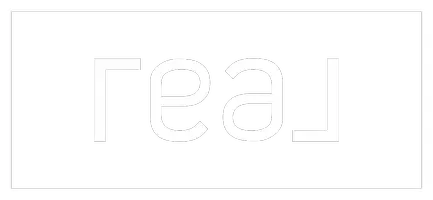Frequently Used Mortgage Terms

We have compiled a comprehensive glossary of mortgage terms that are essential for both prospective homebuyers and existing homeowners to be well-versed in. Certain definitions within this glossary include supplementary details, exemplifications, and solutions to frequently asked questions.
Adjustable-Rate Mortgage (ARM): A mortgage loan that has an interest rate that can change throughout the duration of the loan. The interest rate is linked to the performance of a specific market rate.
Amortization: The gradual repayment of the principal amount over time. In a typical mortgage loan, the principal is scheduled to be fully paid off or amortized by the end of the loan term.
Average Hourly Earnings: A monthly report by the Bureau of Labor Statistics that provides information on the earnings of hourly workers in the private sector, excluding supervisors, in a given month.
Basis Point: One-hundredth of a percentage point. For example, if mortgage rates decrease from 7.50% to 7.47%, it represents a decline of three basis points. A full percentage point is equivalent to 100 basis points.
Cash-Out Refi: A refinancing of a mortgage in which the new loan amount exceeds the outstanding balance of the original mortgage by at least 5%. This allows the homeowner to extract equity from their home.
Conforming Mortgage Loan: A mortgage loan that meets or falls below the limits set by Fannie Mae and Freddie Mac for purchase or securitization in the secondary mortgage market.
Construction Loan: A temporary loan used to finance the construction of a house.
Consumer Confidence Index: A monthly measurement by the Conference Board that assesses the level of confidence households have in the economy.
Consumer Price Index (CPI): A measure of the average change in prices paid by consumers for a fixed basket of goods and services. The CPI is used to determine the underlying rate of inflation. The broadest CPI figure reflects the average change in prices paid by urban consumers, excluding the volatile food and energy sectors.
Conventional Mortgage Loan: Any mortgage loan that is not backed or insured by the government, typically through programs like FHA or VA.
Credit Report: A detailed report that provides information on an individual's borrowing and repayment history.
Credit Score: A three-digit number based on an individual's credit report, used to indicate their creditworthiness and risk.
Employment (Payroll): The number of non-farm employees working in over 500 private and public industries. This data is released monthly by the Bureau of Labor Statistics.
Employment Cost Index: A quarterly index that measures the change in the cost of civilian labor, including salaried workers.
Existing Home Sales: The number of home sales that have closed during a specific month. Existing home sales are influenced by mortgage rates from a month or two prior to the closing.
Fannie Mae and Freddie Mac: These are two mortgage finance companies that are federally chartered and stockholder-owned. They do not originate loans, but instead purchase and/or securitize mortgage loans made by other lenders. They have loan limits on the mortgages they can purchase or securitize, and are required to serve low-, moderate-, and middle-income families.
Federal Funds Rate: The interest rate at which banks lend to each other overnight to cover their daily cash flow and reserve requirements. The federal government sets a target rate, but the actual rate is determined by supply and demand. The government can influence the supply of funds through its own purchases or sales of securities.
Federal Open Market Committee (FOMC): The branch of the Federal Reserve responsible for setting monetary policy. The FOMC meets eight times a year and consists of 12 members, including the governors of the Federal Reserve System and other regional Federal Reserve Bank presidents.
Fixed-Rate Mortgage (FRM): A mortgage loan with an interest rate that remains constant throughout the entire term of the loan.
Gross Domestic Product (GDP): The total value of all goods and services produced in the United States over a specific period of time. GDP data is released quarterly by the Bureau of Economic Analysis.
Home Equity: The difference between the current value of a home and the amount of money owed on the mortgage.
Home Equity Line of Credit: A line of credit that is secured by the equity in a home, allowing homeowners to borrow money as needed.
Home Equity Loan: A loan that is secured by a home and provides a lump-sum amount to the borrower.
Home Improvement Loan: Money lent to a homeowner for the purpose of making repairs or remodeling their home.
Home Loan: Money provided by a bank or lending institution to finance the purchase of a home.
Homeownership Rate: The percentage of households in the United States that own their own homes. This rate is estimated quarterly by the U.S. Census Bureau.
House Price Index: A quarterly measure of the change in prices of single-family homes. The HPI is based on repeat sales or refinancings of the same properties and includes mortgages purchased or securitized by Fannie Mae and Freddie Mac. It does not include homes with mortgages above the conforming loan limit or those insured or guaranteed by other government entities.
Housing Starts: Each month, the Census Bureau provides a count of the number of private residential structures that have begun construction or have received permits.
Interest Rate: A measure that reflects the cost of borrowing money.
Jumbo Mortgage Loan: A type of mortgage loan that exceeds the loan limit set by Fannie Mae and Freddie Mac. These loans carry higher interest rates because the two agencies cannot purchase them from lenders.
Loan-To-Value Ratio (LTV): In a mortgage loan, this ratio represents the amount borrowed relative to the value of the property. For example, an LTV of 80% means the loan covers 80% of the property's value, while the borrower makes a 20% down payment.
Mean Home Price (of New or Existing Homes Sold): The average price is calculated by adding up the prices of all homes sold in a specific period, usually monthly. The mean price tends to be higher than the median price due to the inclusion of very high-priced homes.
Median Home Price (of New or Existing Homes Sold): The middle price in a range of home prices sold within a 30-day period. Median home prices are considered a more accurate indicator of price trends than average home prices.
Mortgage: A loan specifically used for purchasing real estate, secured by the property itself.
Mortgage Application Index (Purchase): A weekly index published by the Mortgage Bankers Association of America, measuring the number of applications submitted for home purchases. This survey covers approximately 40% of all retail residential mortgage transactions.
Mortgage Application Index (Refinance): A weekly index published by the Mortgage Bankers Association of America, measuring the number of applications submitted for refinancing homes. This survey covers approximately 40% of all retail residential mortgage transactions.
Mortgage Broker: An intermediary who facilitates communication and negotiation between borrowers and lenders.
Mortgage Calculator: An online tool that helps borrowers calculate their monthly payments for a home loan.
Mortgage Quote: The interest rate offered to a borrower for a home loan.
Mortgage Rate: The interest charged on the money borrowed for a home purchase.
Mortgage Refinancing: The process of obtaining a new mortgage with different terms or interest rates to replace an existing loan on the same property.
New Home Sales: A survey conducted by the Census Bureau to determine the number of contracts signed for newly constructed homes by builders across the country.
Producer Price Index (PPI): A monthly measurement released by the Bureau of Labor Statistics, indicating the average change in selling prices for goods and services produced domestically. It serves as an indicator of inflation.
Second Mortgage: A mortgage taken on a property that already has another mortgage as collateral. Typically used to access cash from the property for other purposes.
Securitization: The pooling of multiple mortgage loans into a single mortgage-backed security (MBS). The principal and interest payments from these individual mortgages are distributed to the MBS holders.
Underwriting: The process of evaluating the risk involved in approving a specific mortgage loan application.
Unemployment Rate: The percentage of the labor force that is currently unemployed. To be considered part of the labor force, an individual must be employed or actively seeking employment. This rate is released by the Bureau of Labor Statistics.
Categories
Recent Posts










GET MORE INFORMATION

